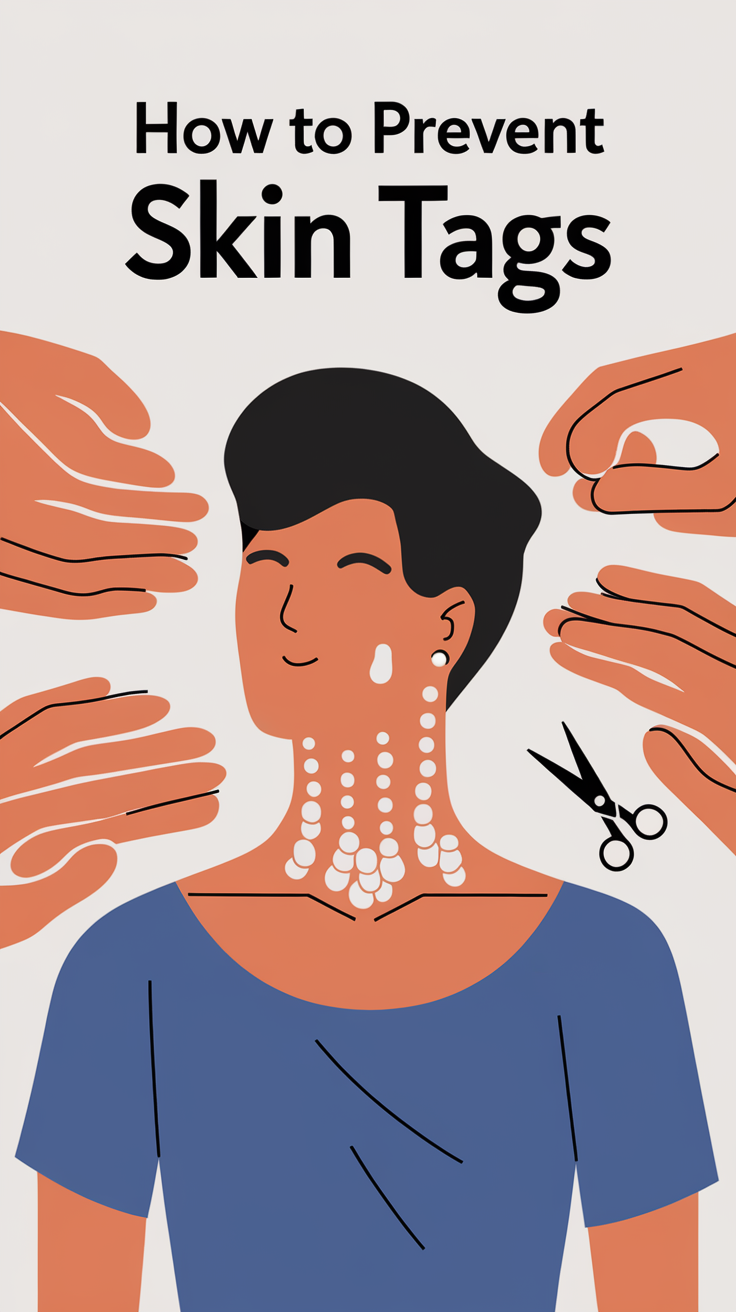What Causes Skin Tags? Complete Guide to Treatment and Prevention
Skin tags, or acrochordons, are small, benign growths that dangle from the skin. They often appear in areas where friction occurs, such as the neck, armpits, groin, and under the breasts. These growths are soft to the touch and vary in size from a tiny speck to larger than a pencil eraser.
I remember the first time I noticed one on my neck—it seemed harmless but left me puzzled. Why did it suddenly appear? Many people share this confusion, so let’s break it down.
Main Causes of Skin Tags
Understanding the reasons behind skin tags can help manage and prevent them. Below is a breakdown of common causes:
Friction and Skin Rubbing
Friction is the leading cause of skin tags. When skin repeatedly rubs against itself or clothing, it triggers skin growth. This explains why tags often appear in high-friction zones like the neck, thighs, and underarms.
Hormonal Changes
During pregnancy or menopause, hormonal surges increase skin cell production, leading to skin tags. For many women, these tags disappear post-pregnancy but may return during hormonal shifts.
Insulin Resistance and Diabetes
Skin tags are strongly linked to insulin resistance and type 2 diabetes. Elevated insulin levels trigger the overgrowth of skin cells.
| Cause | Impact on Skin Tags |
|---|---|
| Friction | Skin rubbing causes micro-irritations that grow. |
| Hormonal changes | Increased growth factors stimulate skin tags. |
| Insulin resistance/diabetes | Excess insulin promotes abnormal skin growth. |
 Differentiating Skin Tags from Other Skin Conditions
Differentiating Skin Tags from Other Skin Conditions
It’s easy to confuse skin tags with warts, moles, or seborrheic keratosis. Here’s a helpful table to clarify:
| Condition | Appearance | Key Difference |
|---|---|---|
| Skin Tags | Soft, flesh-colored, dangling growth. | Painless, harmless. |
| Warts | Rough, grainy bumps caused by HPV. | Viral origin; contagious. |
| Moles | Dark, flat or raised, often pigmented. | Potentially cancerous. |
| Seborrheic Keratosis | Scaly, wart-like, dark brown spots. | Common with aging. |
Safe and Effective Ways to Remove Skin Tags
Although harmless, skin tags can be unsightly or uncomfortable. Here are the most effective removal methods:
Professional Treatments
For safe and quick removal, professional procedures include:
- Cryotherapy: Freezing the tag with liquid nitrogen until it falls off.
- Cauterization: Burning the tag with heat.
- Excision: Cutting the tag with surgical tools.
Home Remedies
If you prefer natural solutions, you can try:
- Apple Cider Vinegar: Apply it daily to dry out the tag.
- Tea Tree Oil: A natural antiseptic known to shrink small tags.
- Dental Floss Ligation: Tie off the tag’s base to cut off blood flow.
From my experience, professional treatments are quicker and more reliable. Home remedies can work but take longer and require patience.
Prevention Tips to Avoid Skin Tags
While you can’t always prevent skin tags, these practical steps can minimize their occurrence:
- Maintain a Healthy Weight: Reducing excess skin folds decreases friction.
- Wear Loose Clothing: Avoid tight fabrics that cause skin irritation.
- Stay Hydrated: Hydrated skin is more elastic and less prone to irritation.
- Manage Blood Sugar Levels: A balanced diet can help reduce insulin resistance.

| Tip | Benefit |
|---|---|
| Maintain a healthy weight | Reduces friction and skin folds. |
| Wear breathable clothing | Prevents constant rubbing on the skin. |
| Control insulin resistance | Minimizes the risk of abnormal skin growth. |
When to Consult a Doctor
Although skin tags are harmless, seek medical advice if:
- They suddenly appear in large numbers.
- A tag becomes painful, inflamed, or bleeds.
- You notice rapid changes in size, shape, or color.
These symptoms may indicate underlying conditions that require prompt attention.
Final Thoughts
In my opinion, while skin tags are harmless, understanding their causes can help you manage and even prevent them. Whether it’s due to friction, hormonal shifts, or insulin resistance, simple preventive steps and professional treatments can make all the difference.
If you’re unsure about a skin growth, always consult a dermatologist to rule out other conditions and explore safe removal options. Take care of your skin—it’s the body’s largest organ and deserves the best!
FAQs About Skin Tags
1. Are skin tags dangerous?
No, skin tags are benign and harmless. However, consult a doctor if they change shape or color.
2. Will removing skin tags cause more to grow?
No, removing skin tags does not trigger new growth. However, new tags may form in other areas due to friction or hormonal changes.
3. Do skin tags fall off naturally?
Sometimes, very small tags may fall off on their own due to friction, but most remain unless removed.
4. Can I remove a skin tag at home safely?
Small tags can be removed with safe methods like dental floss or natural oils, but professional removal is recommended for larger tags.
5. Why do diabetics develop skin tags?
Diabetics often experience insulin resistance, which triggers the growth of skin cells, leading to skin tags.
6. Can skin tags grow back after removal?
Once removed, a specific skin tag will not grow back, but new tags may appear elsewhere.


